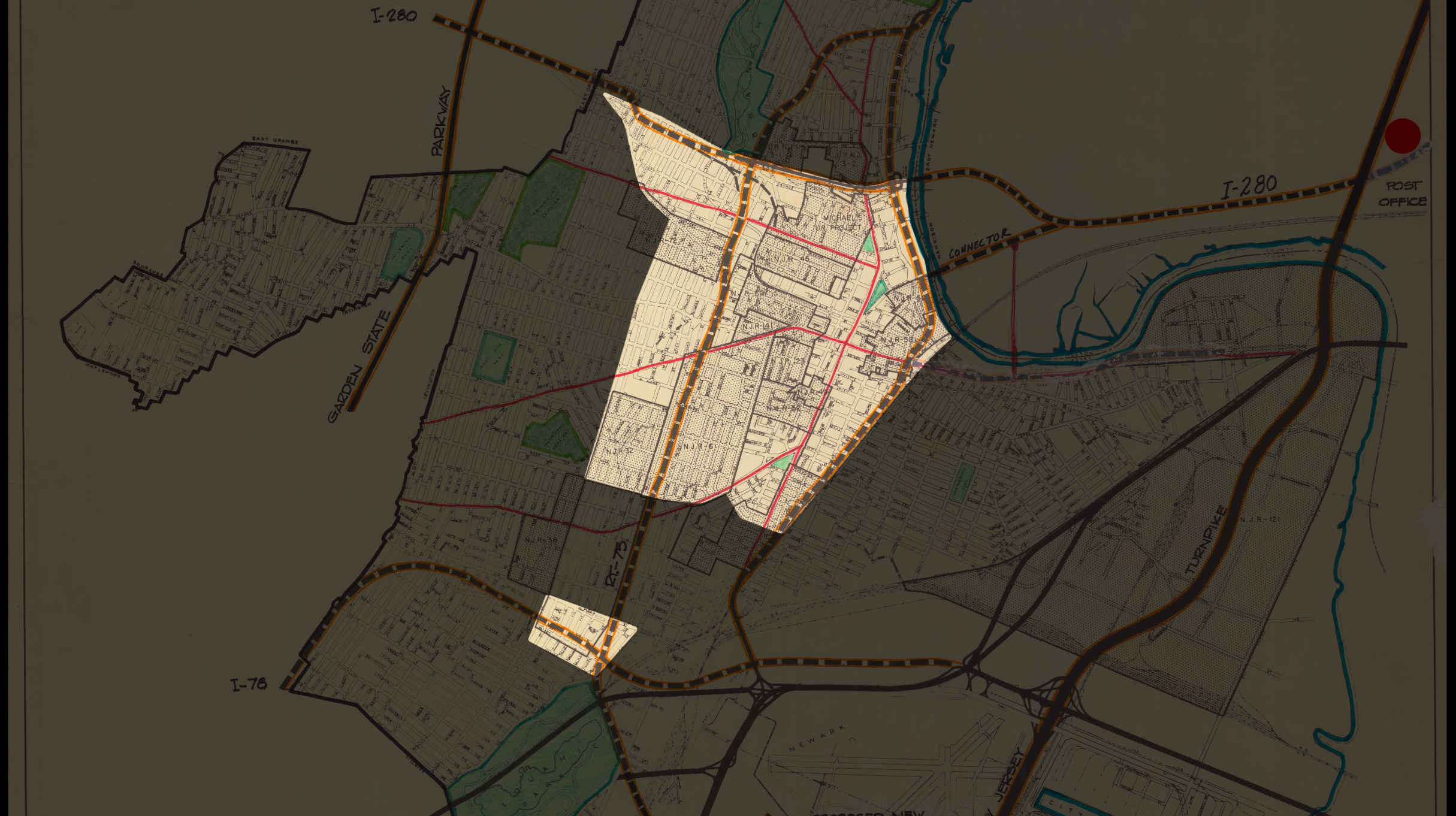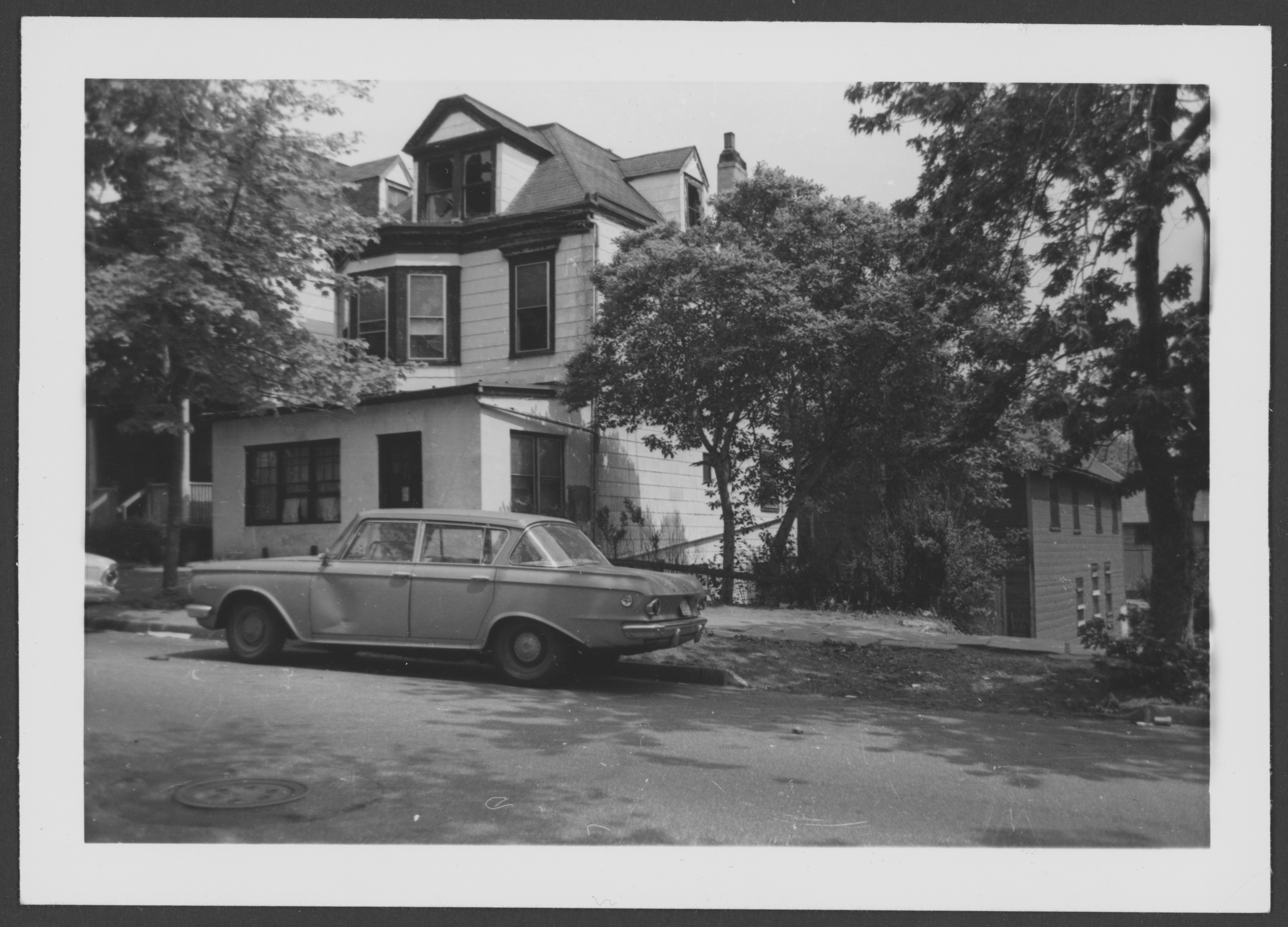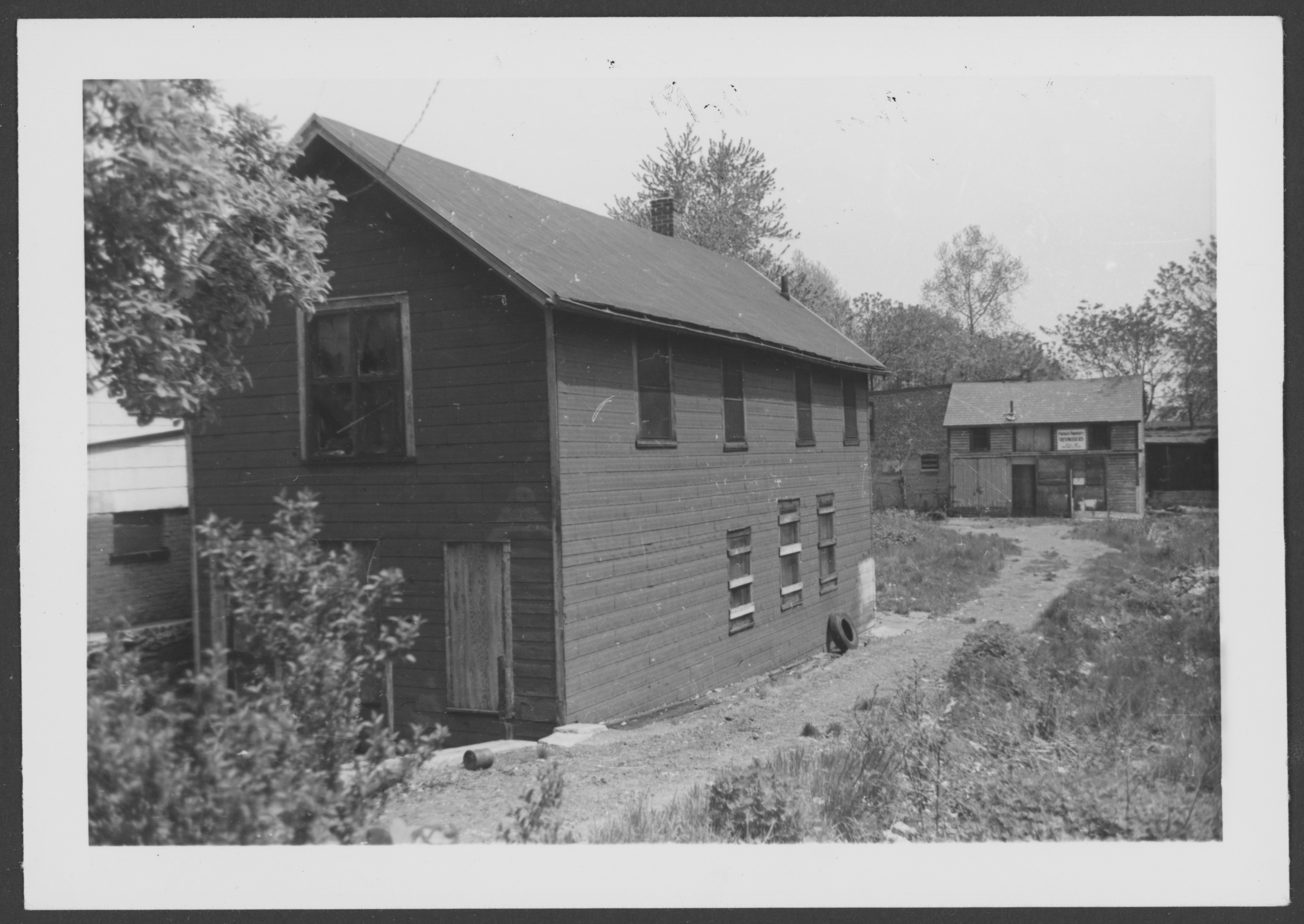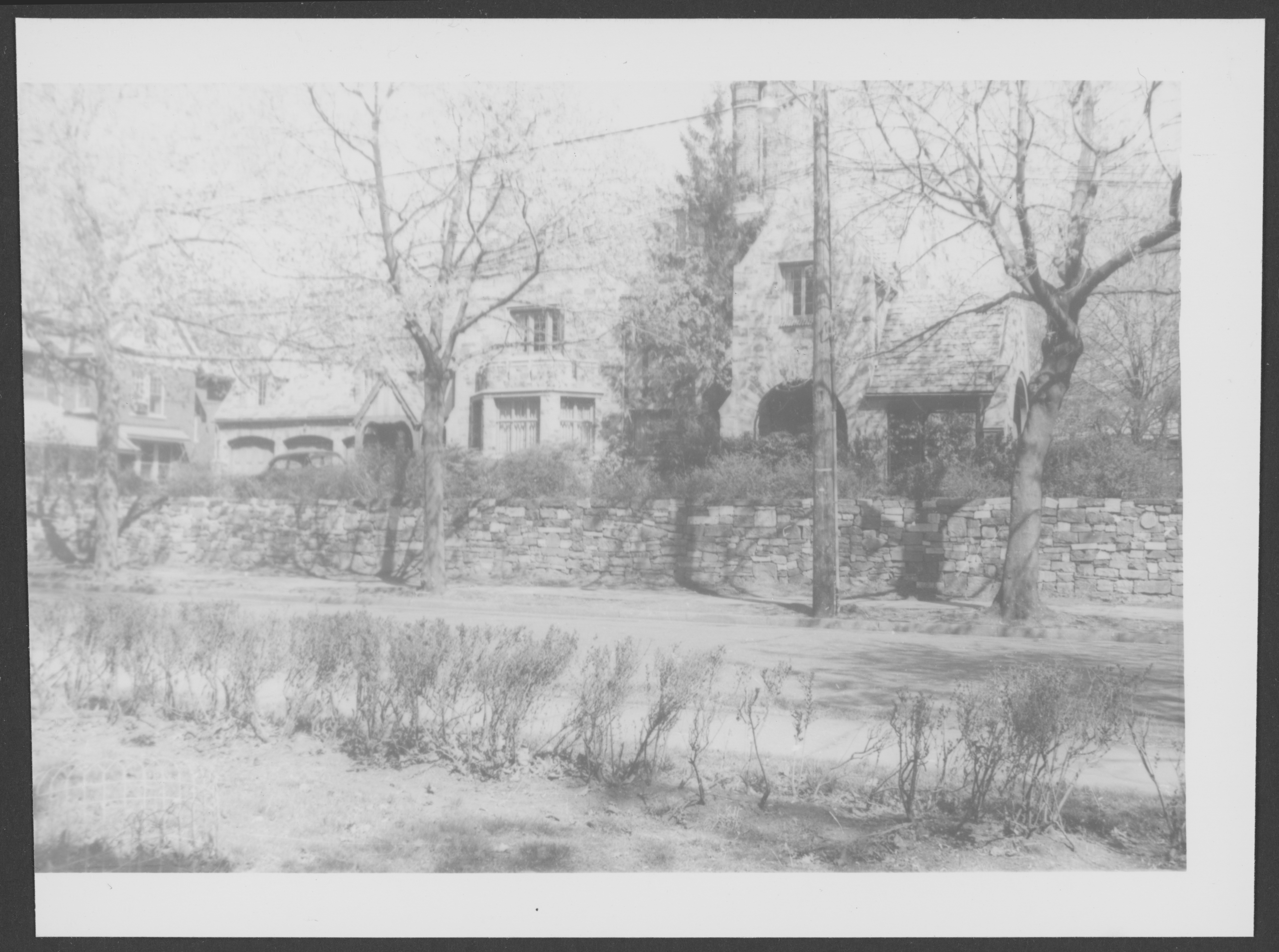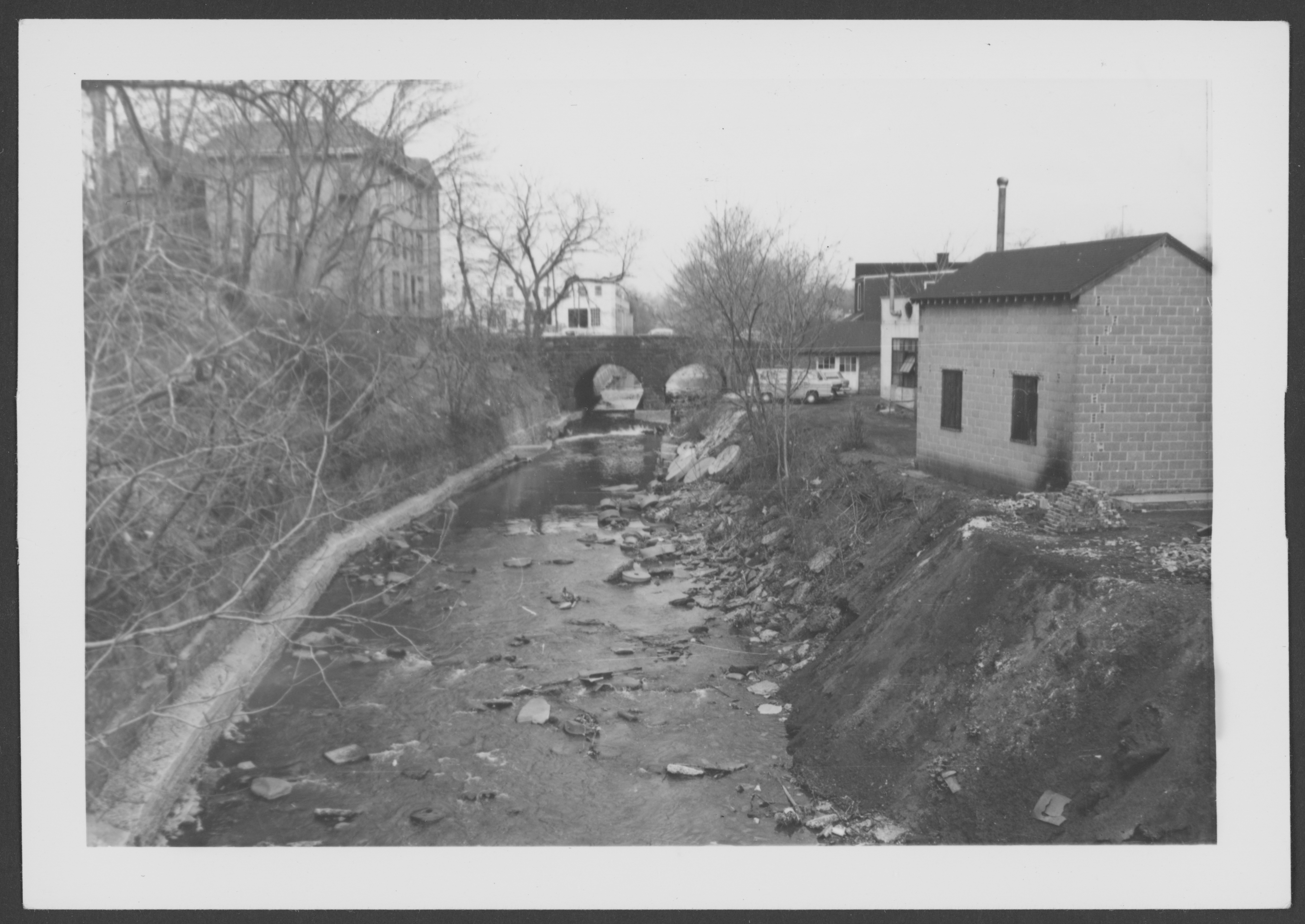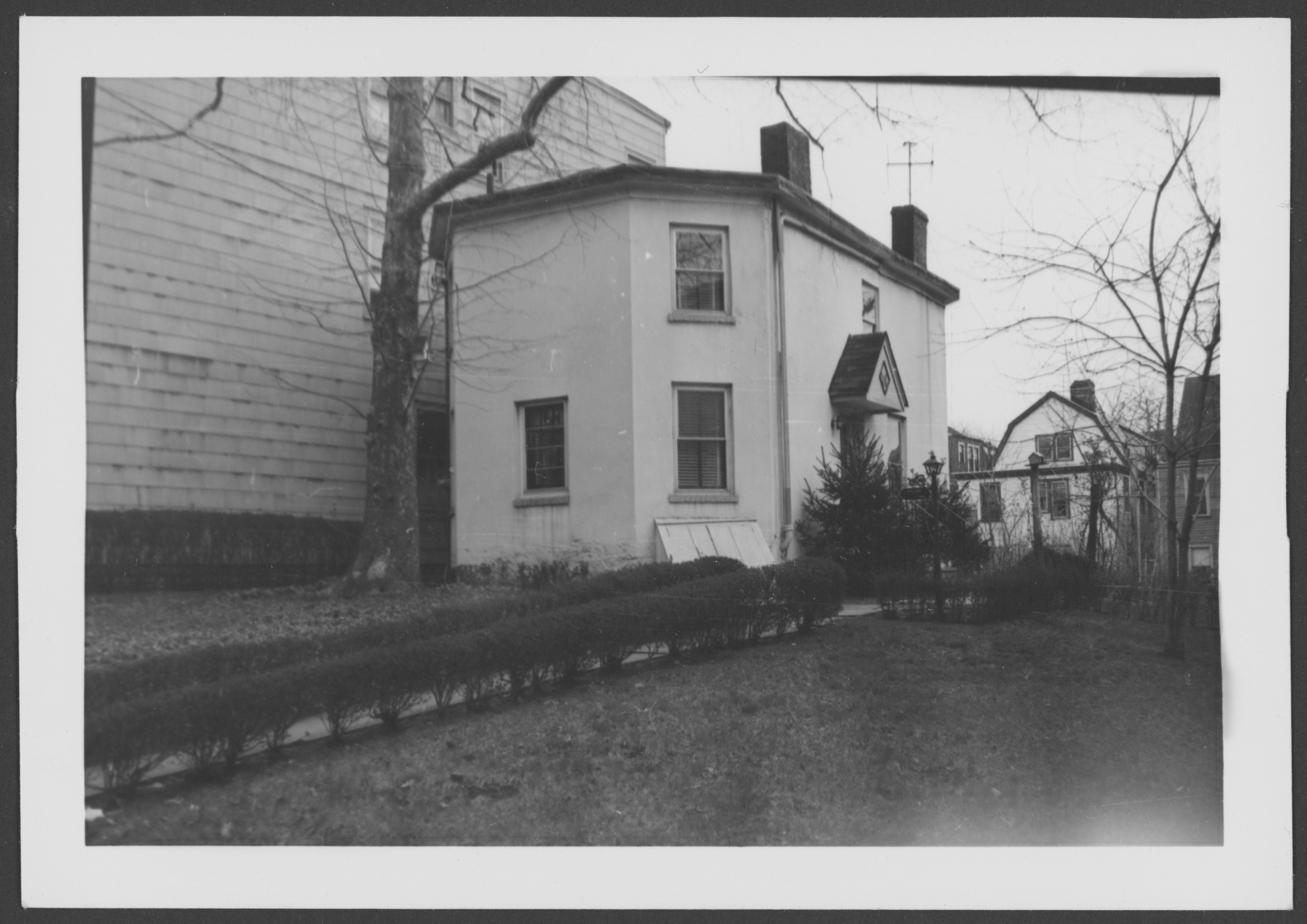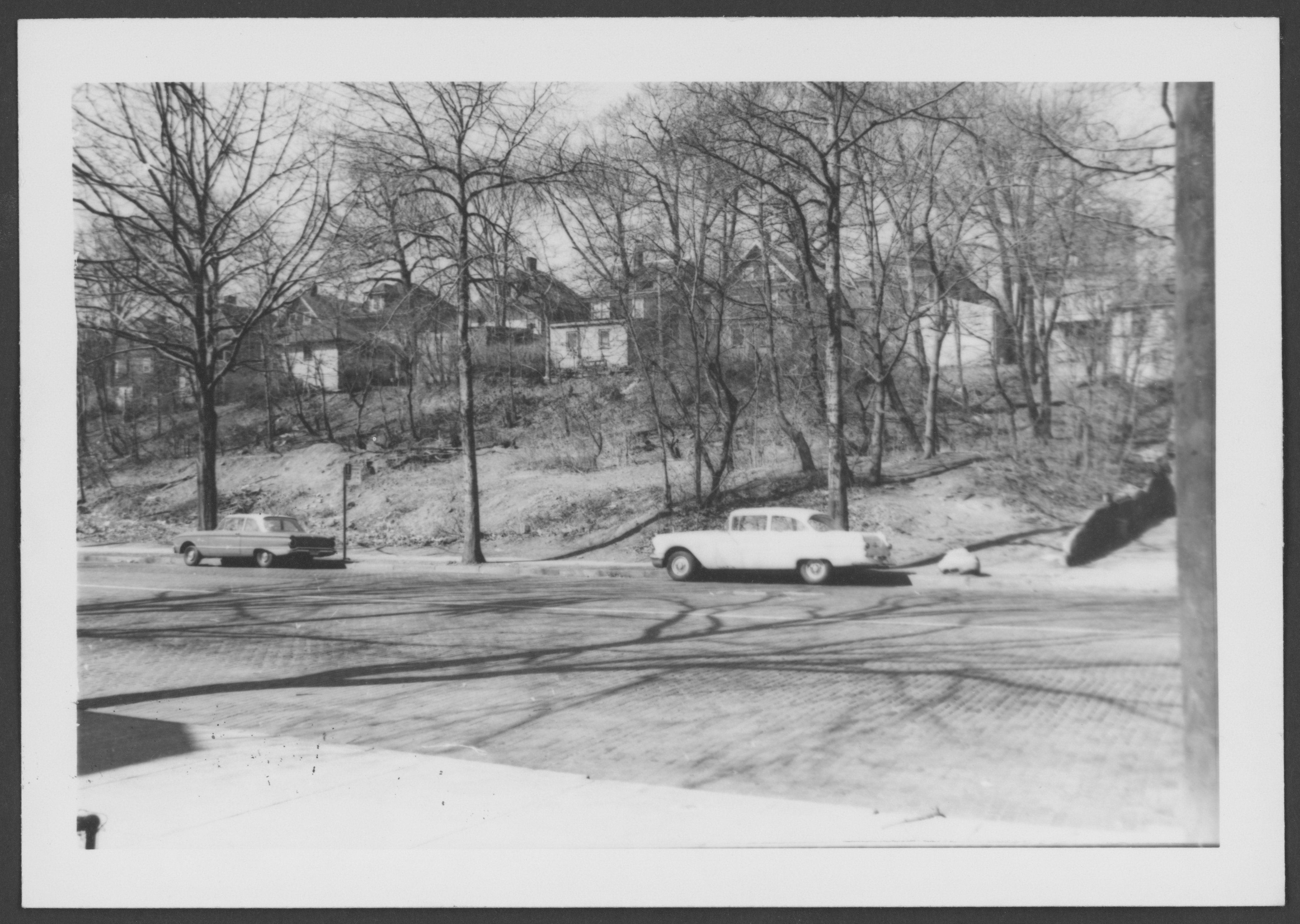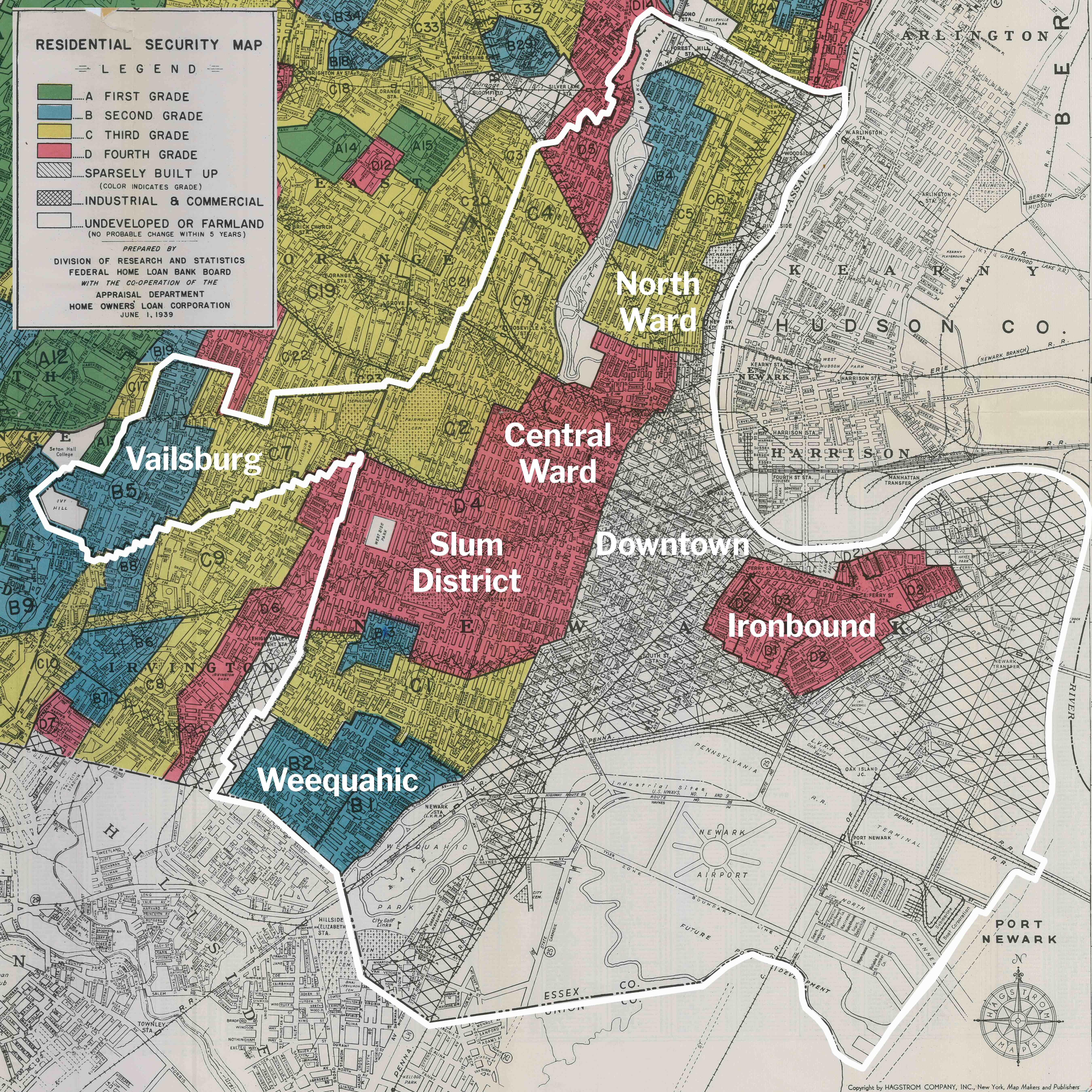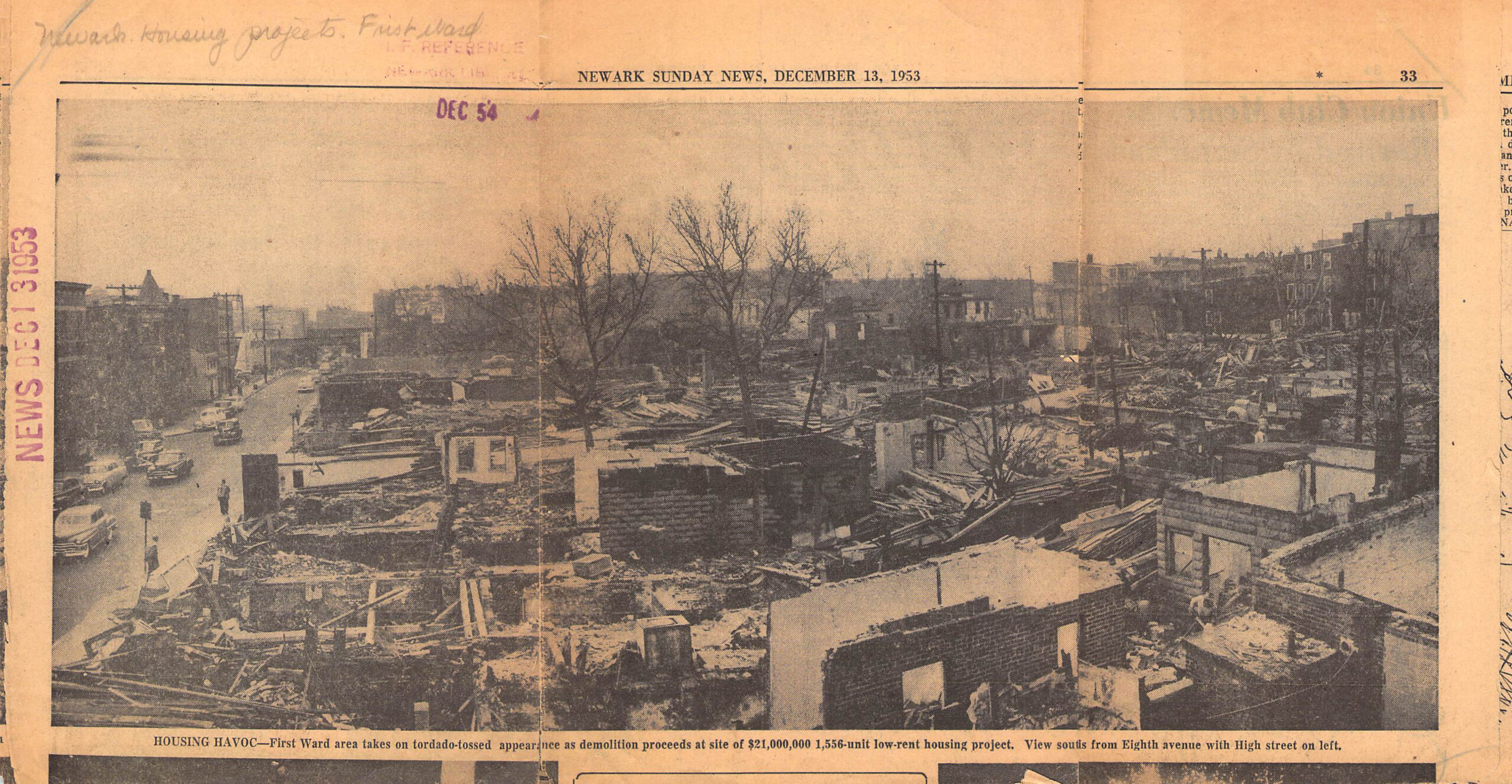
At a cost of $40 million, 469 structures were demolished to displace 4,600 people in Newark’s Little Italy of the Old First Ward. This panoramic photos shows the extent of demolition by December 1, 1953. Caption: “First Ward area takes on tornado-tossed appearance as demolition proceeds. View south from 8th avenue with High street at left.”
Italo Calvino describes the city of Maurilia in his 1972 novel Invisible Cities. The book is a collection of paragraph-length descriptions of 55 imaginary cities drawn from across space and time. Here is one chapter, with each mention of Maurilia replaced with Newark.
In [Newark], the traveler is invited to visit the city and, at the same time, to examine some old postcards that show it as it used to be: the same identical square with a hen in the place of the bus station, a bandstand in the place of the overpass, two young ladies with white parasols in the place of the munitions factory. If the traveler does not wish to disappoint the inhabitants, he must praise the postcard city and prefer it to the present one, though he must be careful to contain his regret at the changes within definite limits; admitting that the magnificence and prosperity of the metropolis [Newark], when compared to the old, provincial [Newark], cannot compensate for a certain lost grace, which, however, can be appreciated only now in the old postcards, whereas before, when that provincial [Newark] was before one’s eyes, one saw absolutely nothing graceful and would see it even less today, if [Newark] had remained unchanged; and in any case the metropolis has the added attraction that, through what it has become, one can look back with nostalgia at what it was.
Beware of saying to them that sometimes different cities follow one another on the same site and under the same name, born and dying without knowing one another, without communication among themselves. At time even the names of the inhabitants remain the same, and their voices’ accent, and also the features of the faces; but the gods who live beneath names and above places have gone off without a word and outsiders have settled in their place. It is pointless to ask whether the new ones are better or worse than the old, since there is no connection between them, just as the old post cards do not depict [Newark] as it was, but a different city which, by chance, was called [Newark], like this one.
Source: pages 30-31

